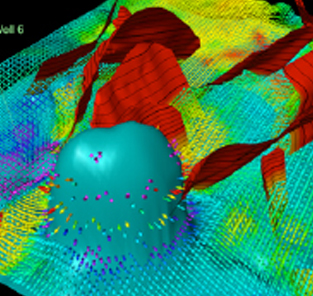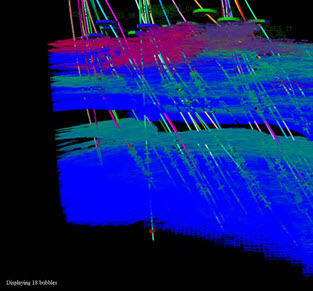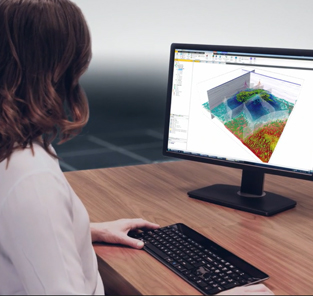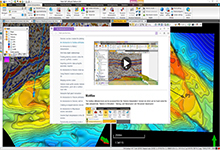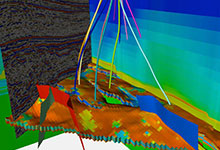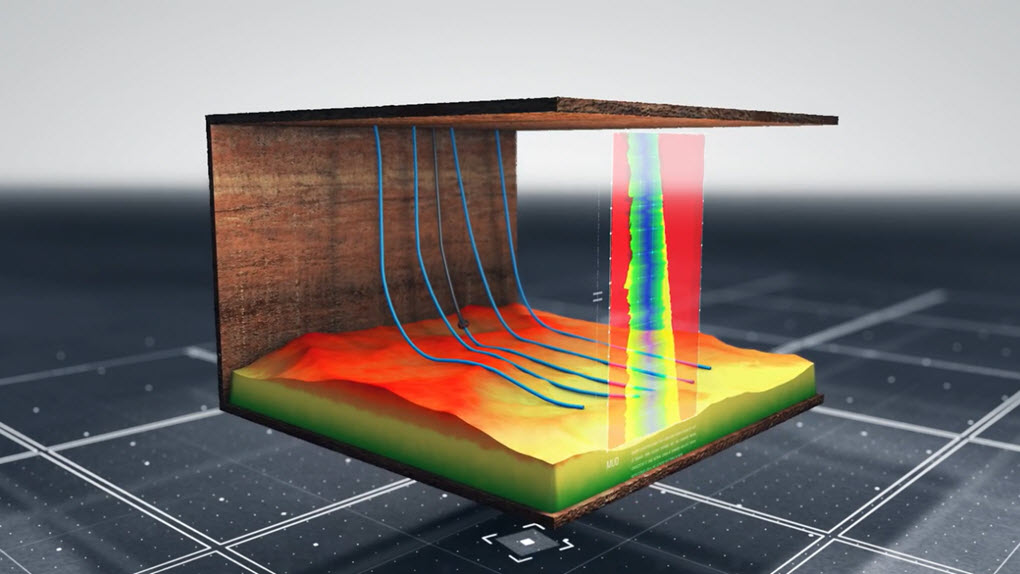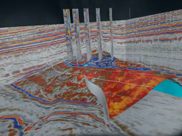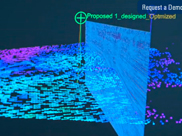Newest developments
- Enhanced support for Petrel workflows with workflow-enabled boundary conditions and simulation case definition, enabling the integration of 3D geomechanics into existing uncertainty and optimization (U&O) reservoir engineering workflows
- Sector modeling option that extracts displacement boundary conditions for a sector grid directly from the results of an encompassing parent simulation
- Support of large geomechanical models up to and greater than 100 million cells by improved Petrel processes and efficiency gains in the Visage simulator
- Improved power-law creep material modeling for salt with multiple initialization methods
- Usability improvements for the most popular postprocessing tool for mud weight prediction
Geomechanics model creation and preprocessing
The robust and intuitive Petrel subsurface software provides users with an end-to-end workflow for creating geomechanical simulation grids within their subsurface modeling workflow, enabling setting up new geomechanical models, adding geomechanics to existing subsurface models, and applying it in coupled geomechanical reservoir simulations.
An easy-to-use workflow makes it simple to include additional regions of interest and features in the geomechanics analyses, such as side- or overburdens, horizons, and faults. If required, local grid refinements (LGRs) can provide increased resolution around faults or wells.
Host grids and any LGRs are populated with geomechanics properties from seismic, logs, core, and well test data. Single-well geomechanics models can be created and validated in the Techlog wellbore software platform with geomechanics properties across selected regions, cell by cell, or with combinations of both.
A choice of basic or advanced rock behavior models and failure criteria are available, ranging from simple linear elasticity to more complex responses, such as nonlinear, anisotropy, critical state (Modified Cam Clay), compaction, and unified models for shear, compaction, creep, and softening in chalks and other weak rocks. Fracture and fault data from seismic, well logs, or discrete fracture network (DFN) modeling can also be incorporated in the geomechanical model.
Geomechanics simulations throughout field life
Incorporating dynamic insights into 3D models creates powerful 4D geomechanical reservoir simulation models. The stresses and movements computed during production, which affect both the reservoir and the surrounding formations up to surface, are used to assess well and completion survivability, solids production potential, inadvertent loss of reservoir containment and out-of-zone injection, changes in reservoir performance, and environmental impact, such as surface subsidence and induced seismicity.
High usability to provide easy access
Petrel’s interface for the powerful Visage simulator has been developed to accommodate various user profiles and project complexities. The systematic workflow delivered in a familiar Petrel layout makes it easy for specialists from other domains (including geophysics, reservoir engineering, drilling, completions, and stimulation) to incorporate rock stresses, rock displacements, rock failure, and geomechanics phenomena into their modeling and analyses.
At any level of modeling and analysis, the integration of the geomechanics workflows with those from other oilfield disciplines in Petrel ensures that the geomechanics models remain consistent with other subsurface interpretations and models—from petroleum systems modeling at an exploration phase through to history matching in reservoir management and field optimization.
Numerical geomechanics simulations
The Visage simulator performs the 3D static or 4D flow-, pressure-, and temperature-coupled calculations for rock stresses, deformations, and failure. Two-way coupling between the Visage and Eclipse or Intersect simulator enables updating the model’s permeability and porosity at any selected time steps. The simulator can also update the mechanical properties in the geomechanics model due to effects such as changing temperatures, water saturations, stress, and deformation.
